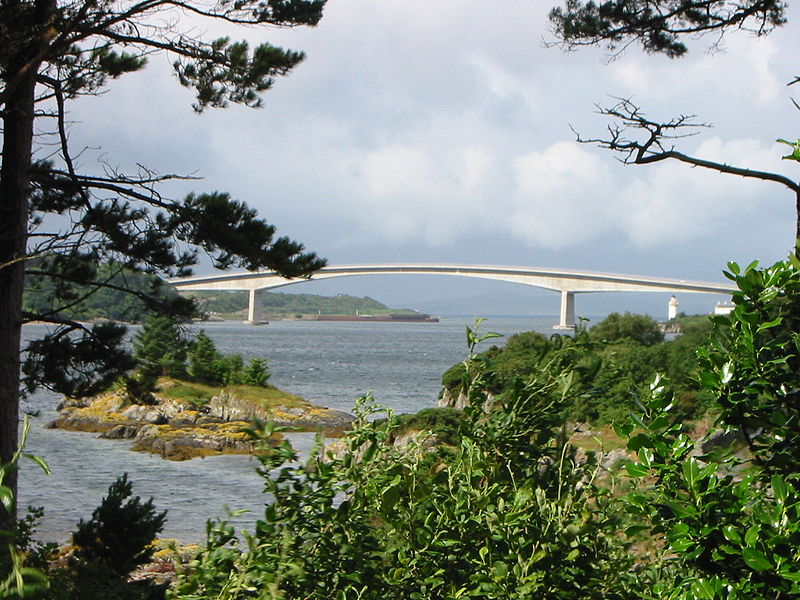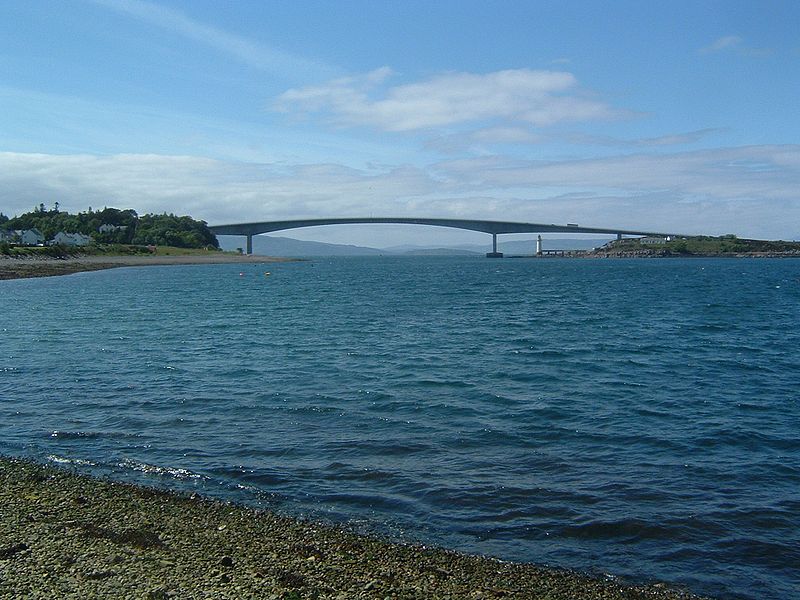| |||||||
Europe
North AmericaSouth AmericaAsiaAustralia and OceaniaAfrica |
Смотрите также: Tay Rail Bridge The Tay Bridge is a railway bridge approximately two and a quarter miles (three and a half kilometres) long that spans the Firth of Tay in Scotland, between the city of Dundee and the suburb of Wormit in Fife.
Tay Rail Bridge Crosses Firth of Tay Locale Dundee to Wormit, Scotland Total length 3,264 metres (10,710 ft) Beginning date of construction 22 July 1871 (1st) 6 July 1883 (2nd) Completion date early 1878 (1st) 1887 (2nd) Opening date 1 June 1878 (1st) 13 July 1887 (2nd) Destruction date 28 December 1879 (1st)
As with the Forth Bridge, the Tay Bridge has also been called the Tay Rail Bridge since the construction of a road bridge over the firth, the Tay Road Bridge. The rail bridge replaced an early train ferry. "Tay Bridge" was also the codename for the funeral plans for Queen Elizabeth, The Queen Mother. The first Tay Bridge The original Tay Bridge was designed by noted railway engineer Thomas Bouch, who received a knighthood following the bridge's completion. It was a lattice-grid design, combining cast and wrought iron. The design was well known, having been used first by Kennard in the Crumlin Viaduct in South Wales in 1858, following the innovative use of cast iron in The Crystal Palace. However, the Crystal Palace was not as heavily loaded as a railway bridge. A previous cast iron design, the Dee bridge which collapsed in 1847, failed due to poor use of cast-iron girders. Later, Gustave Eiffel used a similar design to create several large viaducts in the Massif Central (1867). Proposals for constructing a bridge across the River Tay date back to at least 1854. The North British Railway (Tay Bridge) Act received the Royal Assent on 15 July 1870 and the foundation stone was laid on 22 July 1871. As the bridge extended out into the river, it shortly became clear that the original survey of the estuary had not been competent. The bedrock, at a shallow depth near the banks, was found to descend deeper and deeper, until it was too deep to act as a foundation for the bridge piers. Bouch had to redesign the piers, and to set them very deep in the estuary bed to compensate for having no support underneath. He also reduced the number of piers by making the spans of the superstructure girders longer than before. The first engine crossed the bridge on 22 September 1877, and upon its completion in early 1878 the Tay Bridge was the longest in the world. The bridge was opened on 1 June 1878. While visiting the city, Ulysses S. Grant commented that it was "a big bridge for a small city". The second bridge A new double-track bridge was designed by William Henry Barlow and built by William Arrol & Co. 18 metres (59 ft) upstream of, and parallel to, the original bridge. The bridge proposal was formally incorporated in July 1881 and the foundation stone laid on 6 July 1883. Construction involved 25,000 metric tons (28,000 short tons) of iron and steel, 70,000 metric tons (77,000 short tons) of concrete, ten million bricks (weighing 37,500 metric tons (41,300 short tons)) and three million rivets. Fourteen men lost their lives during its construction, mostly due to drowning. The stumps of the original bridge piers are still visible above the surface of the Tay even at high tide. The second bridge opened on 13 July 1887 and remains in use. In 2003, a £20.85 million strengthening and refurbishment project on the bridge won the British Construction Industry Civil Engineering Award, in consideration of the staggering scale and logistics involved. More than 1,000 metric tons (1,100 short tons) of bird droppings were scraped off the ironwork lattice of the bridge using hand tools, and bagged into 25 kilograms (55 lb) sacks. Hundreds of thousands of rivets were removed and replaced, all work being done in very exposed conditions, high over a firth with fast-running tides. Comments: 0 |
|
|||||








































